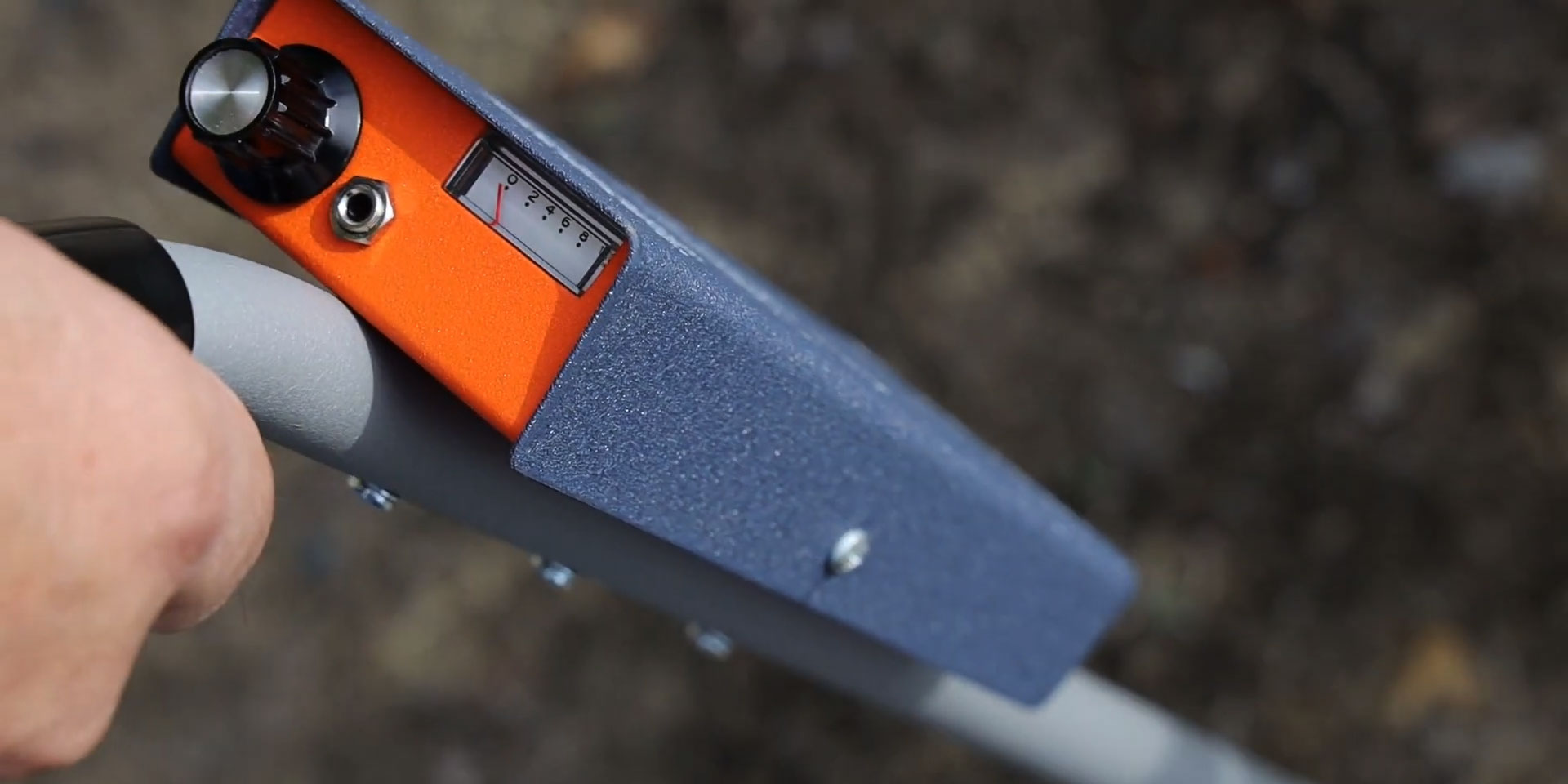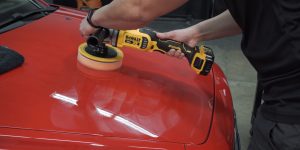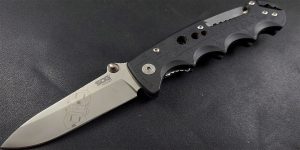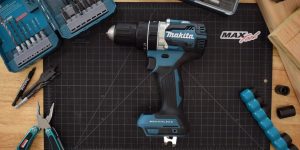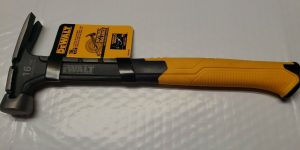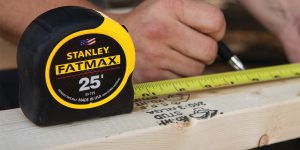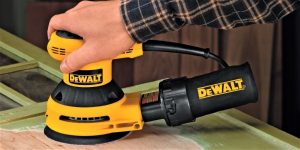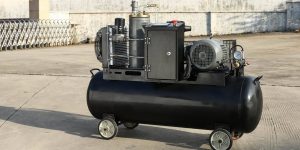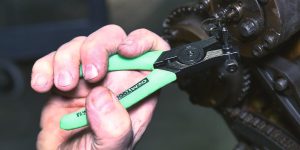Underground cable/wire locators are devices that assist in discovering and identifying buried cables and wires. They work by emitting a signal that travels through the ground and then is picked up by the receiver. It allows the user to see the location of the cable on a display or map.
There are many benefits to using wire finders. First, they can help you save time and money. By locating wires before you start digging, you can avoid unnecessary damage and delays. They also help you stay safe by preventing accidental contact with live cables. Finally, underground cable locators simplify your job by providing correct info about the placement of cables, allowing you to work more effectively and avoid costly mistakes.
However, finding the best underground wire locators may be a challenging, nerve-wracking task. When there are so many options on the market, it’s difficult to decide which product is right for you. By comparing and contrasting some of the top-rated models, this review will assist you in making an informed decision. Interested? Then let’s get down to the details!
Best underground wire locator reviews
Tempo Communications 501 Tracker II – best overall
![]()
I love innovative modern equipment that makes my life easier, saves my time and money. That’s why I appreciate Tempo Communications 501 Tracker II so much!
The Tempo Communications 501 Tracker II is a crucial tool for finding the route of the underground conductors and identifying their depth. You can use this piece of equipment on active or passive systems, and the transmitter rate and receiver sensitivity can be fully adjusted for optimal precision.
The transmitter offers three connection options: direct, inductive coupler, or inductive antenna, while the lightweight receiver provides both auditory and visual indications of signal strength for accurate identification.
I highly appreciate the inductive coupler clamps around the wire or pipe – they are an excellent solution for using on active lines or where you can’t isolate the line. You may also put a transmitter on the floor along the wire path to emit a signal down onto the conductor – that’s where an inductive antenna incorporated into the housing comes in handy.
![]()
The instrument has a 4,000-foot (1.2-kilometer) range and a 7-foot depth (2.2 m); it also features user-friendly sensitivity and transmitter power adjustments. In addition, the Tracker II comes with everything you’ll need to get started right away, including a heavy-duty polyethylene casing that you’ll love. Finally, the tool is battery-powered – it means you can take it with you wherever you go.
Tempo Communications 501 Tracker II is the best underground wire locator available on today’s market – it’s ideal for various business uses. So, if you are looking for an advanced yet reasonably-priced and easy-to-use locator, this Tempo Communication has got you covered!
Pros
- Versatile
- Accurate and efficient
- Straightforward to use
- Large LCD
- Different convenient parameters to identify underground cables quickly
- Utilizes Omni technology
- Excellent price/quality ratio.
Cons
- The construction may seem cheap; however, it really does the trick.
RIDGID NaviTrack Scout – premium

RIDGID was established in 1923 and since that time it’s been highly praised by professionals from all over the world. This brand produces premium-quality, solid and everlasting instruments. And NaviTrack Scout is no exception!
This highly versatile model is suitable for subterranean line identification, finding of sewer line, location with SeeSnake inspection cameras. In fact, this equipment is capable of tracing pipes with frequencies ranging 10 – 35,000 kHz. You can also quickly locate energized wires on a regular basis with this instrument.
Further, the Scout boasts efficient multi-directional antenna technology, providing you with the maximum signal strength possible. It also includes a micro-mapping screen to help identify the various poles in front of and behind the objective. When it comes to locating items, this makes it highly accurate.

In addition, the Navitrack Scout estimates and indicates the depth when positioned over the objective, making it suitable for those utilizing SeeSnake inspection camera reels or other sondes. It also complies with FCC Class B and EN 55022 Class B standards, allowing it to work on various frequencies.
RIDGID NaviTrack Scout is the best premium underground utility locating equipment that will save you tons of extra work! It sure is an investment, but you buy the quality. So, if you are willing to pay a bit more for an underground cable locator that will perform like a charm, you are on the right track with this model!
Pros
- Trusted brand
- Excellent for various business applications
- Rugged and reliable
- Very accurate and user-friendly
- Worth every penny if you’re in the business.
Cons
- A bit steep price.
Mastech MS6818 – also a great choice

The Mastech MS6818 is a durable, handheld tool that makes finding buried cables and conduits straightforward. This equipment can help you identify the beaks or shorts in cables in the wall or ground. It can also track cables in walls or earth, find the fuse, safeguard, beaks or shorts in conduit under the floor. Therefore, you don’t need to buy different locators for different applications like finding wiring in the wall or ground.
The MS6818 features two pieces – the transmitter (MS6818-T) and receiver (MS6818-R). A transmitter sends out an AC or DC at a voltage of 12-600V, and a receiver can detect the signal and determine the object’s location, making this model even more versatile.
The transmitter also has a flashlight function for illuminating your work area. Moreover, the locator is convenient to use with its backlit display either by day or night.

Electrical engineering experts find this tool super resistant to various environments – they say it can be easily used in the basement, attic, even underneath/inside/outside a huge school bus. Actually, MS6818 will help you do your job quicker than you could previously expect!
Mastech MS 6818 is another great tool on this list! Many specialists can use this electric line locator (electricians, construction workers, homeowners, etc.) – it’s user-friendly and efficiently detects the presence of electric cables. Moreover, the detector is very sensitive and can pick up signals even from a distance.
Pros
- Simple to operate
- Saves plenty of time and efforts
- Pretty strong signal
- Helpful sensitivity adjustments – it can adjust three different levels
Cons
- Poor manual instruction
- You’ll have to hold the receiver close to the ground and rotate it in a circle to track the signal.
KOLSOL F02 – budget

The KOLSOL F02 is a must-have tool for anyone working with electrical wiring. It’s used to trace non-energized lines through walls and ground. The device locates circuit breakers rapidly, identifies cables before drilling, and verifies dig sites underground, making it ideal for construction, renovation, and other projects.
The F02 can detect the target on the depth of 2-3 feet and ranges a length of 1000 feet, so you can use it in various situations. Additionally, it includes a free earphone, enabling you to listen closely to the sounds of the cables you’re tracking.

Mastech MS 6818 is another great tool on this list! Many specialists can use this electric line locator (electricians, construction workers, homeowners, etc.) – it’s user-friendly and efficiently detects the presence of electric cables. Moreover, the detector is very sensitive and can pick up signals even from a distance.
Pros
- Accurate
- A time-saver
- Pre-installed with two 9-volt batteries, allowing you to use it right away
- Has a robust carrying case
- Great value for the money
Cons
- Not durable – treat it with care
- It only performs for single-core and double-core wires.
Noyafa NF-826

Noyafa’s NF-826 cable and pipe locator were created with specialists in mind. It identifies short circuits and interruptions in power cables, detects switches, and assigns current circuits to cables, powerlines, and subsurface water/gas supply pipelines.
The locator features a transmitter & receiver combo (a great bonus) and a large, bright screen showing discovered objects. The transmitter also includes a built-in DC/AC voltage meter for measuring linear DC/AC voltages between 12 and 400 volts. Plus, it has a high-voltage alert feature to keep you safe from potential shocks.

The NF-826 comes with convenient added features like auto sweep, USB direct charge, electric torch, and automatic shut down capabilities, making this device perfect for locating cables in any environment.
Nofaya NF-826 is an essential piece of equipment for any professional who needs to find buried objects quickly and easily. Moreover, this cable locator tracker will make your job much more manageable with its user-friendly interface and accurate results.
Pros
- Ergonomic design
- Works adequately
- Easy to use
- Excellent at this price point.
Cons
- Not very clear manual instructions
- You’ll need some practice and experimentation with the settings; however, it works perfectly when you get used to the unit
- Not for heavy use.
How does an underground cable locator work?
Today, many cables are buried under the ground, making an underground cable locator an exceptionally useful invention. The demand for such a locator is only increasing. So, let’s discuss what it consists of and how it works.
The transmitter, which is often called a “snake,” and the receiver, sometimes known as a “worm,” are the two components of an underground wire tracer.
The wire’s location will be illuminated by the transmitter, which sends an AC current to it. As the current continues to flow, the electromagnetic field is generated. The receiver detects that electromagnetic field and allows it to follow its course; you’ll also know its depth. Moreover, the wire locator may help you find the breaks without extensive manual digging.
There are two types of location: active and passive, so let’s take a closer look at them.
Active location
This approach employs both a transmitter and a receiver to locate underground wires. It’s quick and straightforward to use Active Location. It’s also extremely precise, though it can be hampered by metal objects or electrical interference.
Passive location
This method does not require the use of a transmitter. Instead, the cable produces its own electromagnetic field, which the receiver picks up.
Professionals often use the passive location for the detection of live cables. However, it’s worth noting that passive location is not always as exact as active location.
Underground wire locator buying guide
When choosing an underground wire locator, there are a few things to consider. Here they are:
Work depth
When looking for an underground wire locator, it’s essential to consider the work depth. It is the greatest depth at which the finder can discover objects. Most tools have a working depth of around 12 feet, but some can go as deep as 24 feet. If you need to find something buried deeper than that, you’ll need a particularly-designed locator.
Frequency range
The frequency of the underground wire locator is capable of finding buried wires very effectively. 33kHz is a high-frequency option, whereas 1kHz is a low-frequency choice.
The high-frequency adjustments are appropriate for finding long-distance transmission items. The major disadvantage of the low-frequency approach is that it is relatively weak and may easily pass through a lousy conductor.
The high frequency breaks through the rusted wires fairly effectively. On the other hand, it travels more slowly and bleeds out more quickly. Therefore, make sure the underground wire locator you purchase has a wider frequency range to complete all of your tasks successfully.
Additional features
When shopping around for an underground cable locator, it is important to think about the additional features that the unit offers. Some features to look for include LCD clarity, internal GPS/GNSS receiver, overload protection, and strike alert feature.
- In all weather circumstances, the LCD clarity is critical for clearly seeing the readings on the screen. Several brands also have graphical panels with bar graphs and a numerical SSI measurement to better convey signal strength. Some LCDs also have a compass display that shows the overall direction of subsurface utilities.
- The integrated GPS/GNSS receiver is a convenient feature that automatically adds positional data to log entries. This is excellent for training or tracing cables in a specific spot.
- Due to the overload protection mechanism, the cable finder can generate an accurate reading even when there are many outside disturbances.
- When the unit detects a buried potentially harmful object, the strike alert feature notifies you. In addition, if the device has a depth estimate functionality, this information can also be recorded.

